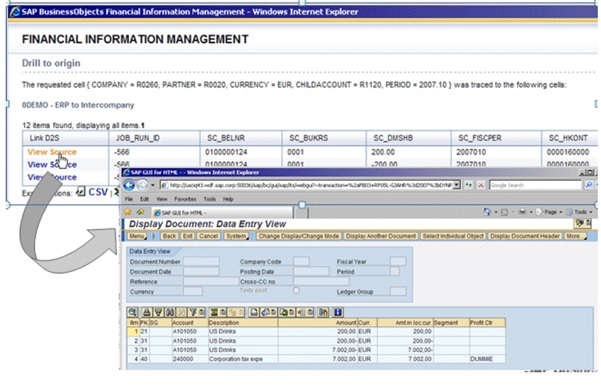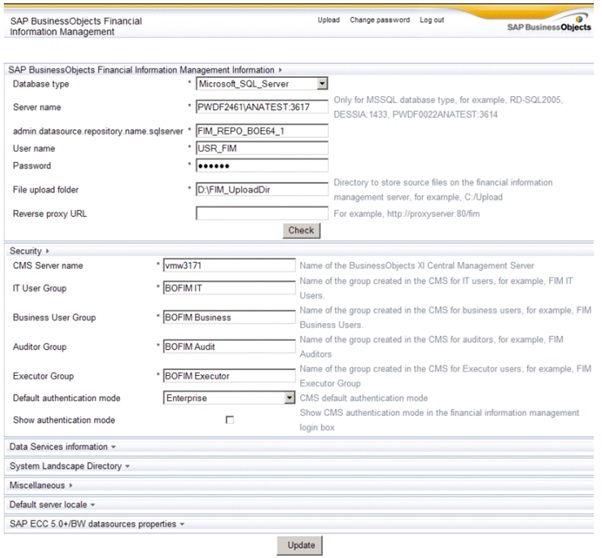SAP Financial Information Management provides an easy to use user interface for business users to define, execute and monitor integration mappings and conversions between a data source (application) and data target (application) where the source and/or target are primarily SAPs EPM Solutions but also flat files, SQL database, SAP ECC, SAP BW and even non-SAP applications can serve as a data source or target.
Furthermore, it doesnt require manual coding and offers an intuitive, wizard driven integration interface where you can simply browse the (master)data of the source and target applications to define mappings and conversions. Once the links between the source and targets are defined, the underlying Business Objects Data Services (BODS) ETL engine automatically adjusts the predefined integration flows eliminating the need for detailed technical knowledge of BODS for standard integration scenarios.
SAP FIM is fully integrated with the Business Objects Enterprise platform (BOE) allowing for User management through the BOE Central Management Console (CMC).
Consequently, SAP FIM can drastically reduce the ICT related integration effort and allows business users to take control over their financial integration processes as well for the definition and maintenance as for the execution. The built-in validations and audit trail also improve the process quality, its transparency and will lead to better overall confidence in the quality of information.
Another important benefit of SAP FIM is the integrated drill-to-source and drill-to-origin capability allowing authorized business users to drill from the target application back to the source data loaded through SAP FIM and visualize the data before and after the mappings have been executed. This can be an important facilitator to improve the communication process between business users that are working with the source data (structures) and those that work with the target application data (structures).
Example: In a group consolidation context for instance, this could be the local accountants that are familiar with their local ledger and associated Chart of accounts (COA), which is used as a data source in the consolidation process, but are less familiar with the Group COA in the Consolidation application. In such a case SAP FIM can bridge the gap between both views and in case the underlying ERP system is SAP ECC, SAP FIM can make it even possible to drill to the originating SAP Document(s) in SAP ECC which is visualized on the picture below.

SAP FIM drill-to-origin in SAP
Out of the box SAP FIM supports the following data sources/targets:
- SAP Strategy Management (SAP SSM)
- SAP Business Planning and Consolidation, version for Microsoft (SAP BPC MS)
- SAP Business Planning and Consolidation, version for Netweaver (SAP BPC NW)
- SAP Profitability and Cost Management (SAP PCM)
- SAP Business Financial Consolidation (SAP BFC)
- SAP Intercompany (standard only as target)
- A database (MS SQL Server, Oracle)
- SAP ECC 5.0 or greater server
- SAP NetWeaver BW 7.0 or greater, server
- Flat files (standard only as source)
If these standard integration scenarios are not sufficient, the market leading integration capabilities of BODS allow for further customization of the underlying integration scenarios and will still allow for the business users to continue their mapping, conversion, execution and monitoring parts of these customized jobs.
The latest version of SAP Financial Management, version 10, features an entirely redesigned user interface and includes a new Web Administration Console as well as an improved integration with SAP Intercompany, SAP ECC and SAP Netweaver Business Warehouse.

The new admin console
element61 offers specialized services in SAP FIM, including setting it up, connecting it to the relevant SAP EPM or other sources, user training, integration best practices as well as detailed technical skills of the underlying Business Objects Data Services (BODS) ETL engine . For more information, please feel free to contact us.